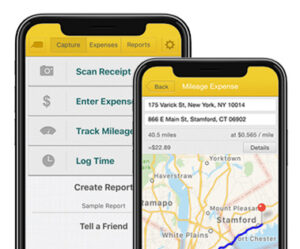IRS Simplified Home Office Deduction (You Can Deduct Your Rent)
Table of Contents
Are you self employed and work from home? If so, you can deduct part of your rent or mortgage. Read here about the IRS simplified home office deduction method.

If you’re self-employed, you’re likely always interested in ways to maximize your tax deductions. The more you’re able to deduct the more income you take home. In this article, we go over how to use the IRS simplified home office deduction method. This is one of two methods provided by the IRS for calculating your home office tax deduction. For a complete set of resources about self-employment and the home office deductions methods scroll to the bottom of this article. Continue reading for how to calculate your simplified home office deduction.
Self-employed individuals include 1099 workers, freelancers, independent contractors, consultants, or any other type of independently employed individual. This also includes small business owners.
Many self-employed individuals, 1099 workers, freelancers, etc., work from home. However, not all are aware they can deduct part of their rent (or mortgage, if you own your home!) from their gross taxable income. It’s time to learn about the simplified home office tax deduction.
What is the Simplified Home Office Deduction?
The simplified home office deduction is a method to calculate your home office tax deduction. The IRS designed this method to make it easier, and faster for taxpayers to calculate their home office deductions. Instead of going through the lengthy process of itemizing and calculating each individual home office expense, with the simplified home office deduction all that. you have to do is use one flat rate. The simplified home office deduction method became available since the tax year starting Jan 1st, 2013.
How Do I Qualify for the Home Office Income Tax Deduction?
The IRS specifies two requirements to meet for you to take the home office deduction if you work from home. These two requirements are:
- The area in your home dedicated to your home office is regularly and exclusively for your home office. For example, if you regularly use your a spare room in your home for your office, and you exclusively use it for work, you can take the home office tax deduction.
- Your home office is the principle place for your business. You likely qualify for the self employed home office tax deduction if you do business at another location but use your home office substantially more.
How Do I Calculate My Home Office Deduction Using the Simplified Method?
The simplified method is the easiest method to use to calculate your home office tax deduction. To use this method you multiply a prescribed rate by the allowable square footage of your home office. That means all you need to do is make one calculation to calculate your home office expense. With the regular method, you make an individual calculation for each home office expense item.
The standard deduction amount used to calculate your home office deduction when using the simplified home office deduction method is $5 per square foot. That means $5 per square foot of the amount of your home used for business. The maximum amount of square feet you are allowed to use in this deduction is 300 square feet. For example, if your home office is 300 square feet, then your annual home office tax deduction will be:
300 square feet x $5 per square foot = $1,500 USD
If your home office is 350 square feet your home office tax deduction would be the same amount, $1,500 USD. This is because 300 feet is the maximum amount of square feet you’re allowed to calculate your home office tax deduction with the simplified home office deduction method. Therefore, in this case, you don’t add the extra 50 square feet into your calculation using the simplified method.
Resources
Read this article for information about the Actual Expense Tax Deduction Method (aka the Standard Method or Regular Method for calculating your home office deduction, Home Office Tax Deduction for Self Employed.
Read this article for a complete list of tax deductions available to you if you’re self-employed, Self Employment Tax Deductions.
IRS: Simplified Options for Home Office Tax Deduction
About Falcon Expenses
Falcon Expenses is a top-rated expense and mileage tracker app for self-employed and small businesses. Falcon is great for business travels and remote workers.
On average, Falcon customers record $6,600, in annual tax deductions. Get started today.
The longer you wait, the more tax deductions you miss.
Automatically track mileage expenses and expenses, keep an odometer log, receipt vault and log billable hours. Quickly organize expenses by time period, project, or client. Easily create expense reports and mileage logs with your expense data to email to anyone in PDF or spreadsheet formats, all from your phone. Falcon’s expense report template is IRS compliant. Use for keeping track of tax deductions, mileage logs, time logs, reimbursements, taxes, record keeping, and more. Falcon Expenses is great for self-employed, freelancers, realtors, delivery drivers, couriers, business travelers, truckers, and more.
Was this article helpful?
We are a team of writers and contributors with a passion for creating valuable content for small business owners, self-employed, entrepreneurs, and more.
Feel free to reach out to use as support@falconexpenses.com





